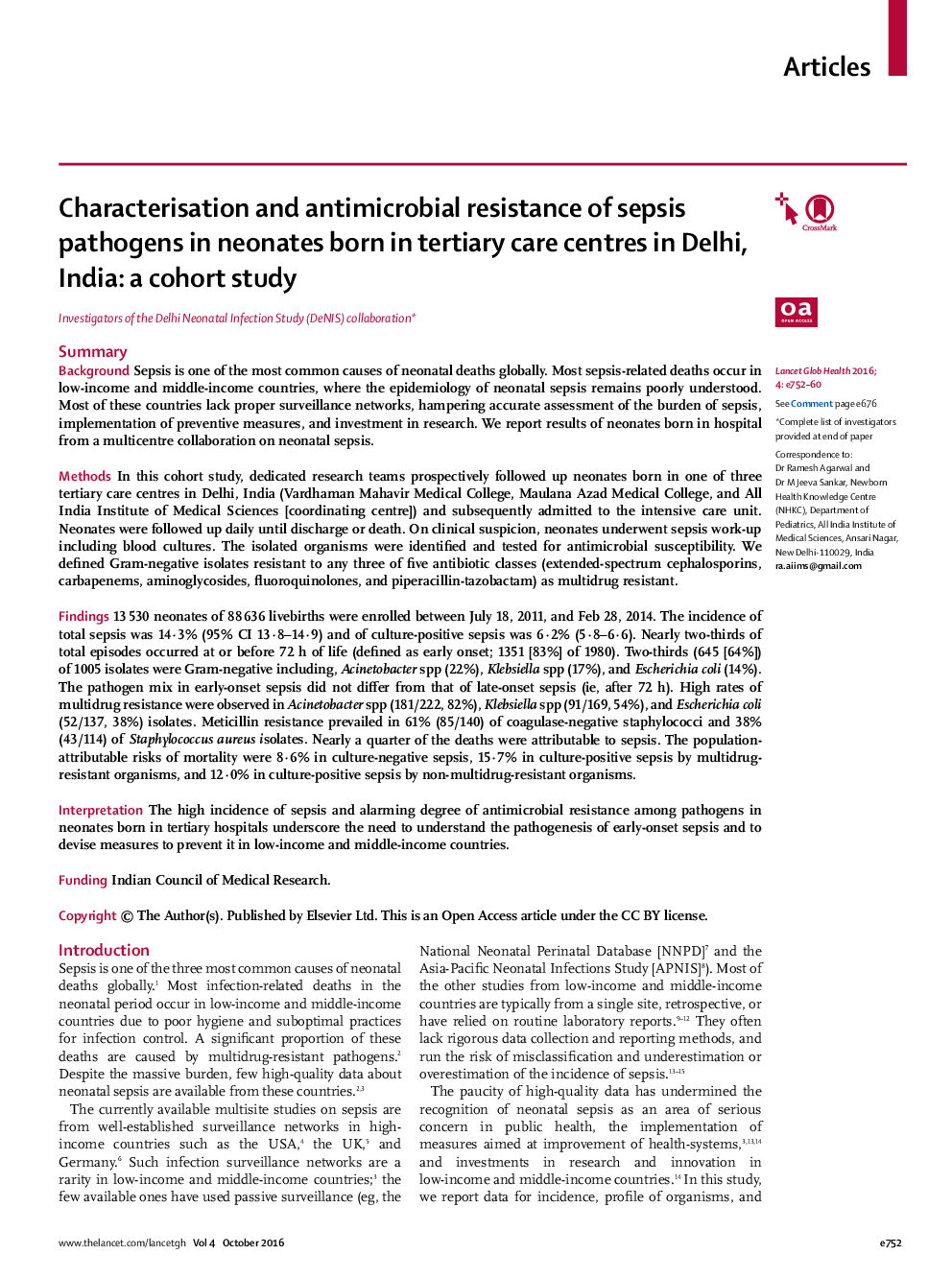| کد مقاله | کد نشریه | سال انتشار | مقاله انگلیسی | نسخه تمام متن |
|---|---|---|---|---|
| 3408695 | 1408151 | 2016 | 9 صفحه PDF | دانلود رایگان |
SummaryBackgroundSepsis is one of the most common causes of neonatal deaths globally. Most sepsis-related deaths occur in low-income and middle-income countries, where the epidemiology of neonatal sepsis remains poorly understood. Most of these countries lack proper surveillance networks, hampering accurate assessment of the burden of sepsis, implementation of preventive measures, and investment in research. We report results of neonates born in hospital from a multicentre collaboration on neonatal sepsis.MethodsIn this cohort study, dedicated research teams prospectively followed up neonates born in one of three tertiary care centres in Delhi, India (Vardhaman Mahavir Medical College, Maulana Azad Medical College, and All India Institute of Medical Sciences [coordinating centre]) and subsequently admitted to the intensive care unit. Neonates were followed up daily until discharge or death. On clinical suspicion, neonates underwent sepsis work-up including blood cultures. The isolated organisms were identified and tested for antimicrobial susceptibility. We defined Gram-negative isolates resistant to any three of five antibiotic classes (extended-spectrum cephalosporins, carbapenems, aminoglycosides, fluoroquinolones, and piperacillin-tazobactam) as multidrug resistant.Findings13 530 neonates of 88 636 livebirths were enrolled between July 18, 2011, and Feb 28, 2014. The incidence of total sepsis was 14·3% (95% CI 13·8–14·9) and of culture-positive sepsis was 6·2% (5·8–6·6). Nearly two-thirds of total episodes occurred at or before 72 h of life (defined as early onset; 1351 [83%] of 1980). Two-thirds (645 [64%]) of 1005 isolates were Gram-negative including, Acinetobacter spp (22%), Klebsiella spp (17%), and Escherichia coli (14%). The pathogen mix in early-onset sepsis did not differ from that of late-onset sepsis (ie, after 72 h). High rates of multidrug resistance were observed in Acinetobacter spp (181/222, 82%), Klebsiella spp (91/169, 54%), and Escherichia coli (52/137, 38%) isolates. Meticillin resistance prevailed in 61% (85/140) of coagulase-negative staphylococci and 38% (43/114) of Staphylococcus aureus isolates. Nearly a quarter of the deaths were attributable to sepsis. The population-attributable risks of mortality were 8·6% in culture-negative sepsis, 15·7% in culture-positive sepsis by multidrug-resistant organisms, and 12·0% in culture-positive sepsis by non-multidrug-resistant organisms.InterpretationThe high incidence of sepsis and alarming degree of antimicrobial resistance among pathogens in neonates born in tertiary hospitals underscore the need to understand the pathogenesis of early-onset sepsis and to devise measures to prevent it in low-income and middle-income countries.FundingIndian Council of Medical Research.
Journal: The Lancet Global Health - Volume 4, Issue 10, October 2016, Pages e752–e760
